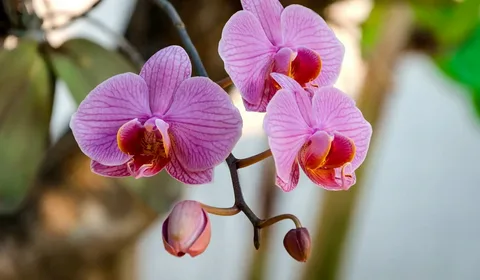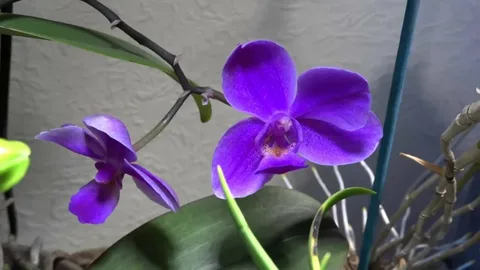Outline
- Presentation: What is a Purple Moth Orchid?
- Why Choose a Purple Moth Orchid?
- Types of Moth Orchids
- Step by step instructions to Really focus on a Purple Moth Orchid
- Watering
- Light
- Temperature
- Humidity
- Soil
- Instructions to Repot a Purple Moth Orchid
- Normal Issues and How to Address Them
- Instructions to Spread a Purple Moth Orchid
- Best Placement for a Purple Moth Orchid
- FAQs About Purple Moth Orchids
- Can I develop a purple moth orchid in low mild?
- How often must I water my purple moth orchid?
- How can I make my red moth orchid bloom?
- Are pink moth orchids toxic to pets?
End: Why the Purple Moth Orchid is Ideally suited for Your Home
Presentation: What is a Purple Moth Orchid?
The Purple Moth Orchid, additionally alluded to as Phalaenopsis, is one of the greatest notable and outwardly charming orchids inside the worldwide. Local to Southeast Asia, the moth orchid gets its name because of the type of its plants, which look like moths in flight
t. Its fashionable, big flowers are available severa sun shades, with the purple range being in particular putting. This orchid is concept for its wealthy coloration, lengthy-lasting blooms, and comparatively clean care in comparison to one of a kind of orchids.
The red moth orchid can thrive indoors, making it an exquisite plant for houses, places of work, or maybe eating places or cafes. Unlike many orchids, which may be notoriously hard to take care of, Phalaenopsis orchids are fairly forgiving, making them a super preference for both novices and skilled plant fans.
Why Choose a Purple Moth Orchid?

There are lots of motives why you may want to choose a Purple Moth Orchid for your private home or office:
- Aesthetic Appeal: The vibrant pink plants make a setting announcement. Their smooth petals, often complemented by the manner of a moderate gradient of shade, supply a hint of beauty to any area.
- Long-Lasting Blooms: Purple moth orchids can bloom for months, often flowering a few instances a twelve months. With the right care, they will provide beautiful blossoms for a long time.
- Low Maintenance: Despite their beauty, red moth orchids are fairly easy to take care of compared to one of a kind orchids. They require a good deal less common watering and can tolerate a range of moderate conditions.
- Indoor-Friendly: These orchids are properly-appropriate for indoor environments, making them best for houses with restricted space or for people who don’t have gardens.
Types of Moth Orchids
While Phalaenopsis is the most commonplace species of moth orchid, numerous types exist, every with particular skills. Here are some terrific ones:
Purple Phalaenopsis Orchid
The conventional pink moth orchid, this variety is loved for its rich, deep red shade. The vegetation often has a velvety appearance and can variety from a tender lavender to a colorful violet hue.
White Phalaenopsis Orchid
A close relative to the purple moth orchid, the white version is absolutely as lovely. It usually has white petals with yellow and pinkish accents near the centre.
Pink Phalaenopsis Orchid
Another well-known range, the purple Phalaenopsis orchid, features clean purple vegetation that often fades to white near the centre. It’s a softer and more sensitive choice in comparison to the deep purple range.
Red Phalaenopsis Orchid
While less commonplace, the red moth orchid is setting with its dark crimson to burgundy blooms, often accented with white or yellow information within the centre.
Instructions to Really focus on a Purple Moth Orchid
Watering
When it involves watering your red moth orchid, there are some key things to do not forget:
- Less is More: Overwatering is a common mistake in terms of orchids. Moth orchids are at risk of root rot if kept too wet for too prolonged. Water your orchid as soon as every 7 to ten days within the iciness and each 5 to 7 days at some stage in hotter months.
- Watering Method: Always water your orchid within the morning to permit any excess moisture to evaporate with the aid of night. Ideally, water straight away into the pot, keeping off the leaves and crown (the centre of the plant), as this can result in rot.
- Check for Dryness: Prior to watering, make sure the dirt is dry. Stick your finger into the dirt or utilize a dampness meter to measure its dryness. Assuming the dirt feels wet, stand by some other day sooner than watering.
Light
Purple moth orchids thrive in shiny, oblique mild. Here’s a way to control their lighting fixtures desires:
- Location: Place your orchid near a window that receives masses of herbal moderate, but keep away from direct sunlight as it could scorch the leaves. A windowsill with sheer curtains or blinds is ideal.
- Artificial Lighting: If you do not have sufficient natural mild, you could supplement with synthetic develop lighting fixtures. Orchids will do brilliant with around 12-14 hours of light in line with day.
Temperature
These orchids select a mild temperature variety. Ideally, preserve your crimson moth orchid among:
Daytime Temperature: 18-24°C (65 seventy five°F)
Evening time Temperature: 15-18°C (59-sixty five°F)
Try not to set your orchid in drafty areas or near cooling or warming gadgets, as temperature variances can pressure the plant.
Humidity
Purple moth orchids love humidity. In their neighborhood environments, they thrive in warmth, humid conditions. To provide the right humidity stage:
- Optimal Moistness: Hold back nothing stickiness.
- Increment Moistness: Utilize a dampness plate, humidifier, or fog the air round your orchid tenderly.
- However, avoid misting the plant without delay, as this can motivate fungal troubles.
- Stay away from Wet Leaves: In the wake of clouding, make sure the leaves aren’t left wet, as standing water on leaves can bring about contagious contaminations.
Soil
Phalaenopsis orchids need to be planted in a detached, appropriately depleting medium. Utilize an exceptional orchid blend or a mix of bark, perlite, and charcoal. These materials help offer air glide across the roots while preventing the soil from staying too damp.
Instructions to Repot a Purple Moth Orchid
Repotting your red moth orchid is a fundamental piece of orchid care. Orchids ought to be repotted each 2-3 years, or while the preparing medium begins to separate or while the roots grow out of the pot.
Steps to Repot Your Orchid:
- Choose the Right Pot: Pick a pot that’s best slightly larger than the current one, as too much lotion can cause the orchid to have a reputation on root boom in desire to flowering.
- Remove the Orchid: Gently cast off the orchid from its old pot. Be cautious no longer to harm the roots.
- Trim Dead Roots: Cut away any useless, rotting, or diseased roots. Healthy roots are white or green.
- Prepare the New Pot: Add a layer of glowing orchid combination to the bottom of the modern day pot. Place the orchid in the pot and fill in with greater combo, making sure the roots are nicely-protected but the crown of the plant is above the soil.
- Water Lightly: After repotting, water the orchid lightly to assist settle the mix across the roots.
Normal Issues and How to Tackle Them
Yellowing Leaves
- On the off chance that the leaves of your orchid flip yellow, it can be an indication of overwatering or an unreasonable measure of direct daytime.
- Arrangement: Check the watering repeating and make specific your orchid isn’t getting an over the top measure of sun
- . Trim off the yellowing leaves to maintain the plant healthy.
No Blooms
If your crimson moth orchid isn’t blooming, it is able to be due to wrong mild or temperature conditions.
- Solution: Ensure the orchid is getting sufficient light (but not an excessive amount of direct daylight). You may also want to regulate the temperature to help the orchid set buds.
Brown Leaf Tips
Brown leaf tips are frequently a signal of low humidity or salt construct-up from fertilizers.
- Arrangement: Increment the moistness across the orchid and flush the preparing medium with water to dispose of additional compost salts.
Instructions to Spread a Purple Moth Orchid
Engendering ruby moth orchids might be brought out through a technique known as keiki spread, which incorporates growing a super currant plant from the little branch-offs that occasionally shape on the blossom stem.
Steps to Propagate:
- Identify Keikis: A keiki is a small plant that looks along the flower spike.
- Cut the Keiki: Once the keiki has developed roots of its own, use sterile scissors to cut it off the principal plant.
- Plant the Keiki: Pot the keiki in its own orchid pot with orchid blend. Water it and provide the equal care as a person orchid.
Best Placement for a Purple Moth Orchid

The exceptional area on your pink moth orchid is based upon on its mild and humidity desires:
- Indoors: A vivid windowsill with oblique slight is right.
- Avoid Drafts: Keep it away from air conditioners, heating vents, and direct drafts.
- Humidity: Orchids do outstanding in humid rooms like toilets, but make certain there’s enough light.
FAQs About Purple Moth Orchids
Can I grow a purple moth orchid in low light?
Purple moth orchids can tolerate low light for a quick period however they thrive in those situations. They want vibrant, indirect, mild to flower and live healthy.
How consistently do I need to water my pink moth orchid?
Water your ruby moth orchid when every five-7 days in more sultry months, and every 7-10 days in some undefined time in store for the cooler months. Continuously look at the dirt to ensure it’s dry sooner than watering.
How might I make my pink moth orchid blossom?
To encourage blooming, make certain your orchid receives plenty of brilliant, indirect moderation. Keep the temperature regular and keep away from overwatering. After blooming, provide the plant a relaxation length in advance rather than encouraging new flowers.
Are blood red moth orchids harmful to pets?
Indeed, moth orchids are harmful to pets whenever ingested. Keep them out of the reach of felines and canines.
End: Why the Purple Moth Orchid is Ideal for Your Home
The Purple Moth Orchid is a phenomenal and simple to-really focused plant that can light up any room with its rich, brilliant sprouts. Whether you’re a fledgling or a carefully prepared plant sweetheart, this orchid is an impeccable craving.
It’s no longer only lovely, however additionally durable, making it a perfect partner in your indoor garden.
With a touch interest to moderate water, and humidity, your red moth orchid can thrive and bloom one year after 12 months, which include a hint of beauty and nature to your home. Follow the care tips furnished, and you’ll be rewarded with a wholesome, lovely orchid that continues to have an effect on. Happy gardening!
